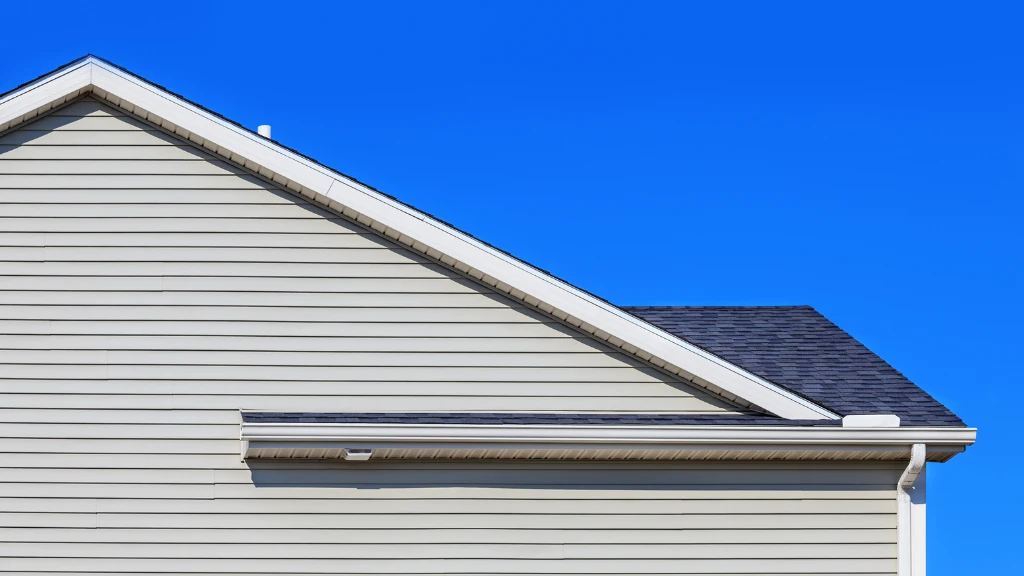
Vinyl siding is a popular choice among homeowners due to its durability, affordability, and low maintenance requirements. However, like any exterior material, it is subject to wear and tear over time, raising the question: How long does vinyl siding last? The answer depends on various factors, such as the quality of the siding, the climate, and the level of maintenance.
In this article, we’ll provide you with expert insights into the lifespan of vinyl siding, including its average duration, signs of wear, and tips on how to prolong its life.
Whether you’re a homeowner considering vinyl siding or a contractor installing it, this guide will equip you with the knowledge to make informed decisions about this popular exterior material.
So, let’s dive in and learn how long vinyl siding can last!
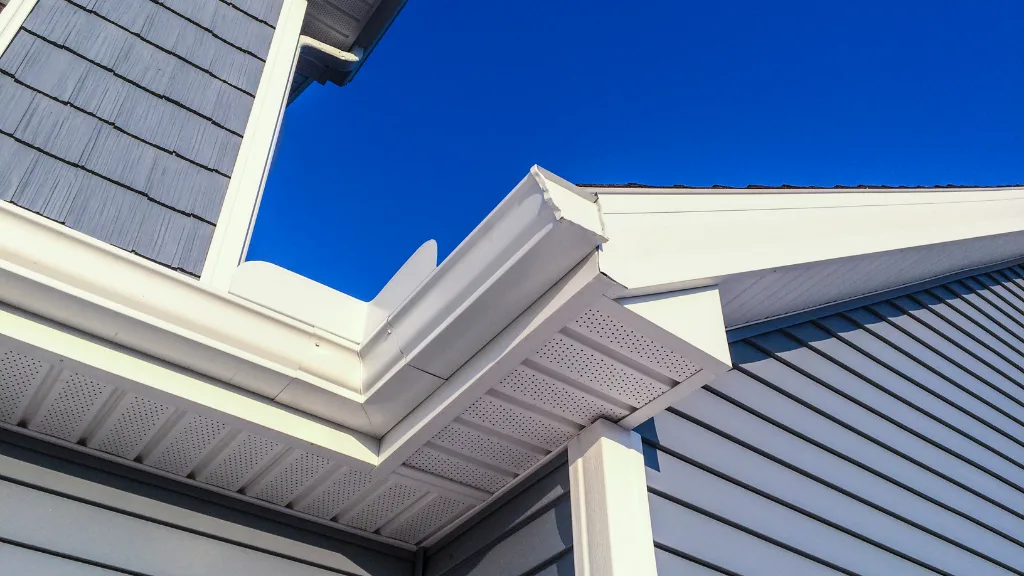
Lifespan of Vinyl Siding
Factors Affecting Longevity
The lifespan of vinyl siding depends on several factors. To keep it brief, you could expect your vinyl siding to last between 20 and 60 years. However, with regular care and maintenance, vinyl siding can last even longer, potentially up to 100 years.
Factors that contribute to the lifespan of your vinyl siding include climate, exposure to sunlight, and proper cleaning and repair.
Direct sunlight can cause your vinyl siding to fade, stiffen, and crack. To protect it from UV radiation, you can paint your vinyl siding, which will extend its lifespan.
Proper cleaning and inspections to identify any signs of wear like fading, breaking, or warping will also ensure a longer life for your siding.
Comparison to Other Siding Materials
Comparing vinyl siding to other popular siding materials, you’ll notice:
- Wood siding: Typically, wood siding lasts around 20 to 40 years, depending on the type of wood and how well it’s maintained. It can last longer with regular maintenance, like painting or staining, but can be susceptible to rot and insect damage.
- Aluminum siding: This type of siding might last between 20 and 50 years with proper maintenance. However, aluminum is prone to denting and may not be the most energy-efficient choice.
- Steel siding: More durable than aluminum, steel siding can last up to 50 years or longer. It’s resistant to denting, fire, and insects but may be susceptible to rust if the finish is compromised.
- Fiber cement siding: A highly durable and low-maintenance material, fiber cement siding can last up to 50 years or more. It’s resistant to fire, insect damage, and rotting but may require repainting every 10 to 15 years to maintain its appearance and protective properties.
To recap, while vinyl siding is generally lower-maintenance when compared to other materials, the lifespan of your siding depends on the type of material, care, and maintenance. By taking proper care of your vinyl siding, you can ensure that it remains durable and long-lasting.
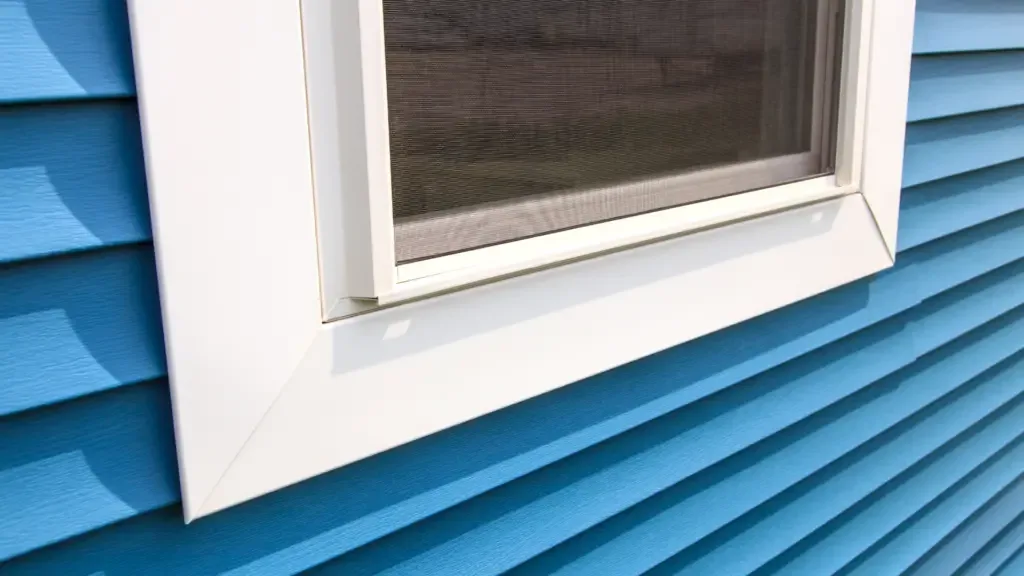
Maintenance and Care
Cleaning Methods
To maintain the appearance and durability of your vinyl siding, it’s essential to clean it at least once a year. Use a garden hose, sponge, stiff-bristle brush, a bucket, and a mild detergent, such as laundry soap or a TSP substitute.
After scrubbing the surface, rinse it with clear water to remove any remaining dirt and detergent.
Preventing Mold and Mildew
Vinyl siding is a low maintenance material, but it is still susceptible to mold and mildew if not adequately cared for. To prevent these issues:
- Ensure proper ventilation around your home, especially in areas prone to moisture, such as bathrooms and kitchens
- Keep gutters clean and free from debris to prevent water from pooling behind the siding
- Remove any vegetation that may trap moisture against the siding
Handling Dents and Damage
Over time, your vinyl siding may experience fading, dents, or other damage. To handle these issues:
Fading: Apply a fresh coat of paint to protect the vinyl siding from further UV damage and improve its appearance.
Dents: Using a hairdryer or heat gun, gently warm the dented area until it is pliable enough to push back into place. Avoid applying excessive heat, or you risk melting the siding.
Cracked or broken pieces: Repairing holes or replacing broken pieces is essential to maintain the siding’s integrity. In the case of significant damage, contact a professional to assist with repairs.
Overall, consistent care and maintenance will help extend the lifespan of your vinyl siding, keeping it looking its best and protecting your home for years to come.
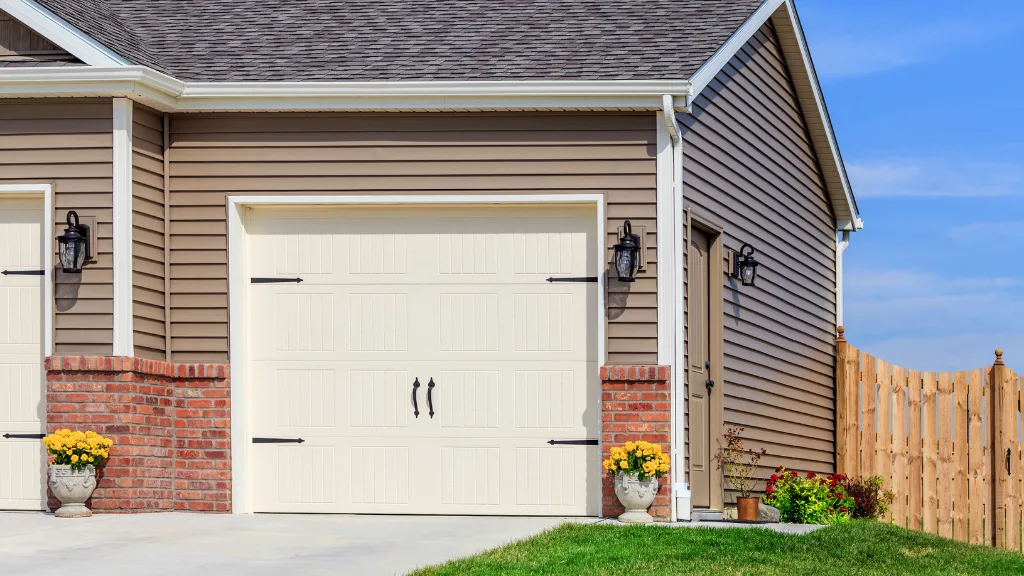
Signs of Wear and Damage
Recognizing Warped or Buckled Siding
When inspecting your vinyl siding for signs of wear and damage, the first thing to look out for is warped or buckled siding.
Warping occurs when the vinyl siding becomes distorted due to excessive heat or moisture, while buckling happens when the siding pulls away from the exterior walls.
To recognize these issues:
- Examine the siding from different angles, ensuring you can see any distortion or displacement.
- Look for loose exterior boards that could indicate the siding has shifted.
- Check for uneven surfaces and gaps between the siding and the wall.
Detecting Moisture and Rot Problems
Another crucial aspect of maintaining your vinyl siding is to detect and address moisture and rot problems. These issues can significantly impact the longevity of your siding.
Watch out for the following signs:
- Peeling interior paint or wallpaper in your home can be a result of moisture seeping through the siding.
- Inspect the siding for any water stains or discoloration, which could indicate water damage.
- Check for soft or spongy spots on the siding, which may be a sign of rotting material beneath the surface.
By regularly inspecting your vinyl siding and addressing any signs of wear and damage, you can ensure that it lasts as long as possible. Proper care and maintenance are essential to prolonging the life of your siding and preventing any costly repairs or replacements.

Replacement and Repair
When to Replace Vinyl Siding
Vinyl siding generally lasts about 20 to 40 years with regular care, including semi-frequent cleaning and minor repairs. However, over time, direct sunlight can cause the vinyl siding to fade, stiffen, and crack.
As a result, it’s essential to keep an eye out for signs of damage, such as rot, holes, fading, and broken pieces. When you notice these issues, it’s time to consider replacing your vinyl siding to maintain the structural integrity and appearance of your home.
DIY vs. Professional Installation
When it comes to replacing vinyl siding, you have two options: doing it yourself or hiring a professional.
DIY Installation:
- Cost-effective choice for the budget-conscious homeowner.
- Gives you control over the entire process, allowing for customization and repair choices.
- Requires patience, time, and some basic tools, like a zip tool and new siding pieces.
- Suitable for minor repairs, such as a cracked piece of siding.
Professional Installation:
- Ensures proper installation and insulation according to industry standards.
- Experts have experience and knowledge about choosing the right material and method for your specific needs.
- Usually comes with a warranty or guarantee for work performed.
- May cost more, but can save you time, hassle, and potential mistakes associated with DIY methods.
When deciding between DIY and professional installation, consider factors such as your experience, available time, budget, and the extent of the damage to your vinyl siding. If you feel confident in your abilities and would like to save money, DIY could be a suitable choice.
However, if you prefer the expertise and convenience of a professional, it may be worth the investment to ensure long-lasting results.
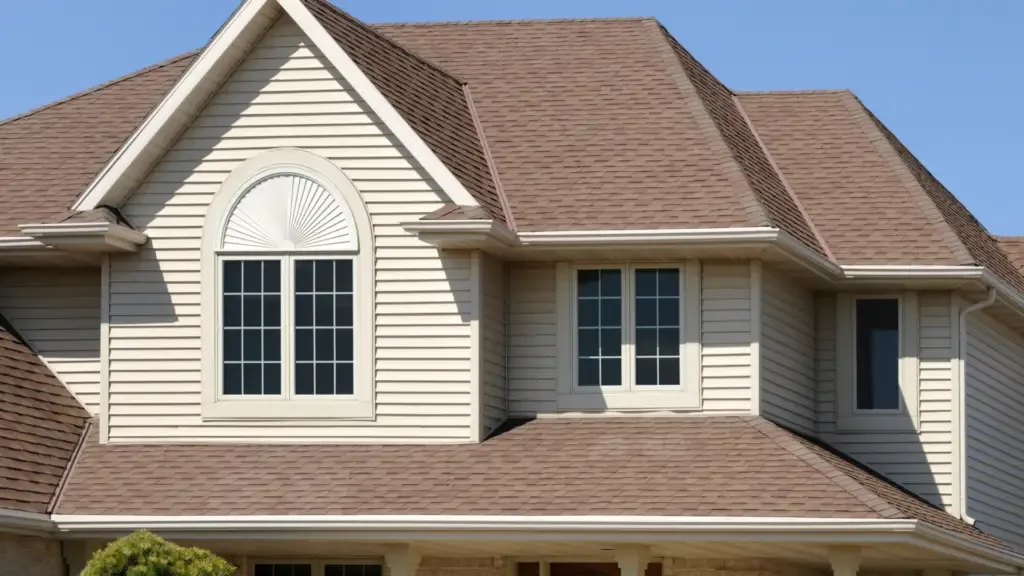
Advantages and Disadvantages
Pros of Vinyl Siding
Vinyl siding offers several advantages that make it a popular choice for homeowners. First and foremost, it is a low-maintenance option, which means you can save time and effort on upkeep.
Additionally, vinyl siding is known for its durability and longevity. With proper care, it can last 60 years or more, depending on factors such as climate and repairs.
Another benefit of vinyl siding is its energy efficiency. When installed correctly, it can improve your home’s insulation, leading to lower utility bills. Furthermore, vinyl siding is resistant to common issues that might plague other materials, such as insect damage and weather-related damage from high winds or hail storms.
Finally, vinyl siding is an affordable option that can deliver a great look and performance for your home. When compared to other siding materials, vinyl is often less expensive to purchase and install, while still providing a high level of durability and low-maintenance.
Cons of Vinyl Siding
Despite its many advantages, there are some drawbacks to consider when choosing vinyl siding. One issue is that extreme temperature changes and weather conditions can cause warping or cracking over time.
This deterioration can shorten the lifespan of your siding, especially in climates with extreme heat or cold.
Another disadvantage is that vinyl siding can develop holes from hail storms or other impacts. Though it is resistant to insects and high winds, it is not immune to damage from hail or other debris during storms.
Once holes appear, you may need to replace the siding to maintain its protective qualities.
Lastly, while vinyl siding is generally resistant to fading, it may start to show signs of discoloration after 10 to 15 years in sunny climates. This effect is particularly noticeable with dark-colored siding, which can lose its vibrant appearance due to prolonged sun exposure.
In such cases, you may need to replace the siding sooner than expected to maintain its attractiveness and effectiveness.
In conclusion, vinyl siding offers several benefits, such as durability, energy efficiency, and affordability. However, it is essential to consider potential drawbacks, like susceptibility to weather-related damage and discoloration, before investing in vinyl siding for your home.
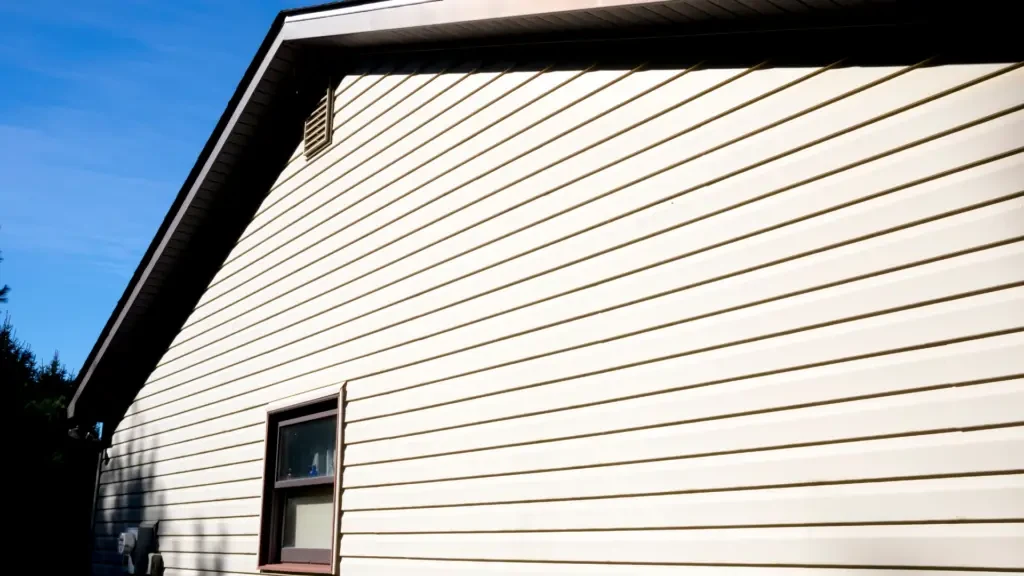
Effect on Curb Appeal and Resale Value
When you install new vinyl siding, it can significantly impact your home’s curb appeal and resale value. One of the primary reasons for this is the fresh and updated appearance it provides. Here are some key benefits:
- Improved Appearance: Over time, your exterior siding may become worn or faded, negatively affecting its overall appearance. New vinyl siding can bring a fresh, clean look to your home and improve its curb appeal.
- Durability: Vinyl siding is known for being durable and long-lasting, which makes it an appealing option for potential homebuyers. This siding material can last anywhere from 20 to 60 years or more, depending on your climate and maintenance.
- Low Maintenance: Compared to other siding materials, vinyl requires minimal upkeep. There’s no need for regular painting, and it’s resistant to rot and insect damage. This low maintenance aspect can be an attractive selling point for buyers who may not want to deal with constant upkeep.
- Energy Efficiency: Vinyl siding can also contribute to your home’s energy efficiency, as it helps insulate your house and reduce heat transfer. This added energy efficiency translates into savings on your energy bills and can be a significant selling point.
In addition to these benefits, it’s worth noting that replacing your exterior siding is one of the most cost-effective ways to increase curb appeal and property value. According to a 2022 Remodeling Impact Report by the National Association of Realtors® (NAR) and the National Association of the Remodeling Industry (NARI), homeowners who invest in new fiber-cement or vinyl siding can recover 86% and 82% of their investment, respectively.
Bear in mind that not only the siding but also your home’s roof plays a crucial role in boosting curb appeal. A well-maintained and attractive roof can complement your newly installed vinyl siding, giving your home an even more polished and updated appearance.
In conclusion, new vinyl siding can have a positive effect on your home’s curb appeal and resale value. It offers a range of benefits, from improved appearance and durability to energy efficiency, making it an attractive investment for homeowners.
Preventing Pests and Other Issues
To keep your vinyl siding in good condition for a longer time, it’s essential to prevent pests such as mice, squirrels, rodents, and termites from causing damage. By taking a few preventive measures, you can protect your siding and maintain its lifespan.
First, regularly inspect the exterior of your home for signs of pest activity, such as chewed holes or droppings. Seal any gaps or openings on the walls or foundation where rodents or insects might enter. Pay special attention to the areas around windows, doors, and eaves.
It’s also crucial to maintain your landscaping to deter pests from being attracted to your property. Here are some ways to maintain your yard:
- Trim trees and shrubs, ensuring they don’t touch your home’s siding. This will prevent rodents from using branches to access your home.
- Remove any potential food sources for pests by cleaning up fallen fruit or seeds and securing garbage cans with tight-fitting lids.
- Keep firewood and other debris at least 20 feet away from your home to reduce the likelihood of termite infestations.
In addition to these measures, consider using a pest control spray or treatment designed for use around homes. Opt for an all-natural product if you have pets or children, as it will be safe for them. Regularly apply the treatment according to the manufacturer’s instructions to maintain its effectiveness.
By taking these steps, you can prevent pests and other issues from affecting your vinyl siding, ensuring it lasts as long as possible.
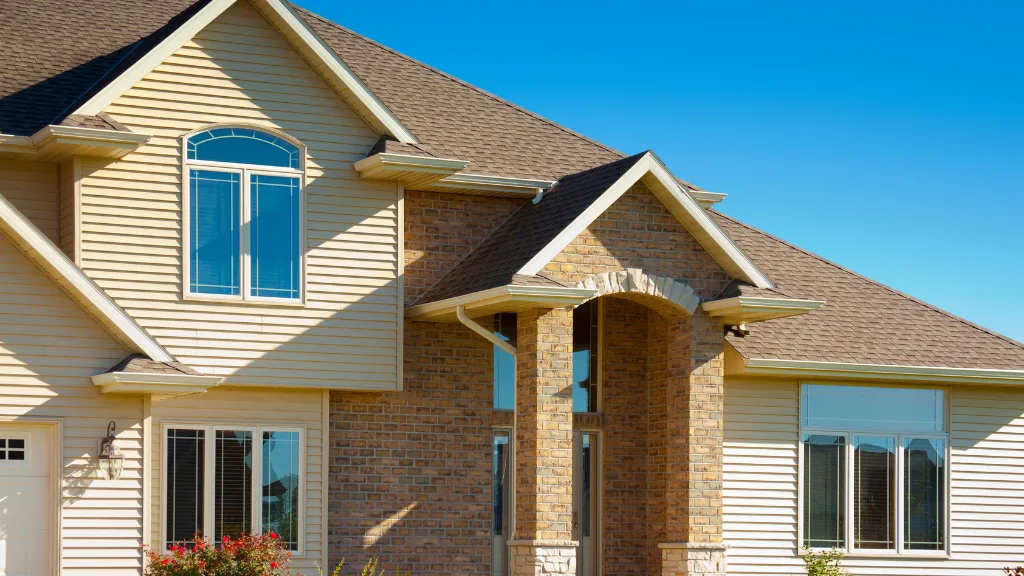
Choosing the Right Vinyl Siding
Color Selection
When selecting the color for your vinyl siding, consider the climate in your area, as well as the overall aesthetic appeal. It’s important to choose a color that is both colorfast, meaning it won’t quickly fade due to sunlight exposure, and resistant to weathering.
Some vinyl siding products are available in pre-painted options, which can provide additional durability and protection against fading. However, you can also choose to paint your siding yourself to achieve a specific hue or to refresh its appearance over time.
Style and Profile Options
There are several popular siding options available to suit your home’s architectural style and your personal preferences. Here are some common styles and profiles to consider:
- Horizontal lap siding: A classic option that features overlapping horizontal panels.
- Board and batten siding: Vertical siding with alternating wide and narrow panels, which can create a rustic appearance.
- Shake siding: Mimics the look of wood shingles for a traditional or cottage look.
- Dutch lap siding: Similar to horizontal lap siding, but with a beveled edge to create a more distinct shadow line.
As you explore these options, keep in mind the life expectancy of the vinyl siding you choose, as well as any disadvantages, such as melting from reflected sunlight or susceptibility to weather damage.
To help weigh your options, you can create a table to compare the styles, profiles, and other factors:
| Style | Profile | Life Expectancy | Disadvantages |
|---|---|---|---|
| Horizontal Lap | Overlapping | 30-40 years | Susceptible to UV |
| Board & Batten | Vertical | 20-60 years | Needs maintenance |
| Shake | Shingle-like | 20-40 years | Can be expensive |
| Dutch Lap | Beveled | 20-60 years | Fading, weathering |
In the end, it’s essential to choose a vinyl siding option that meets your preferences and blends well with your home’s style, while still offering the durability and longevity you desire.
